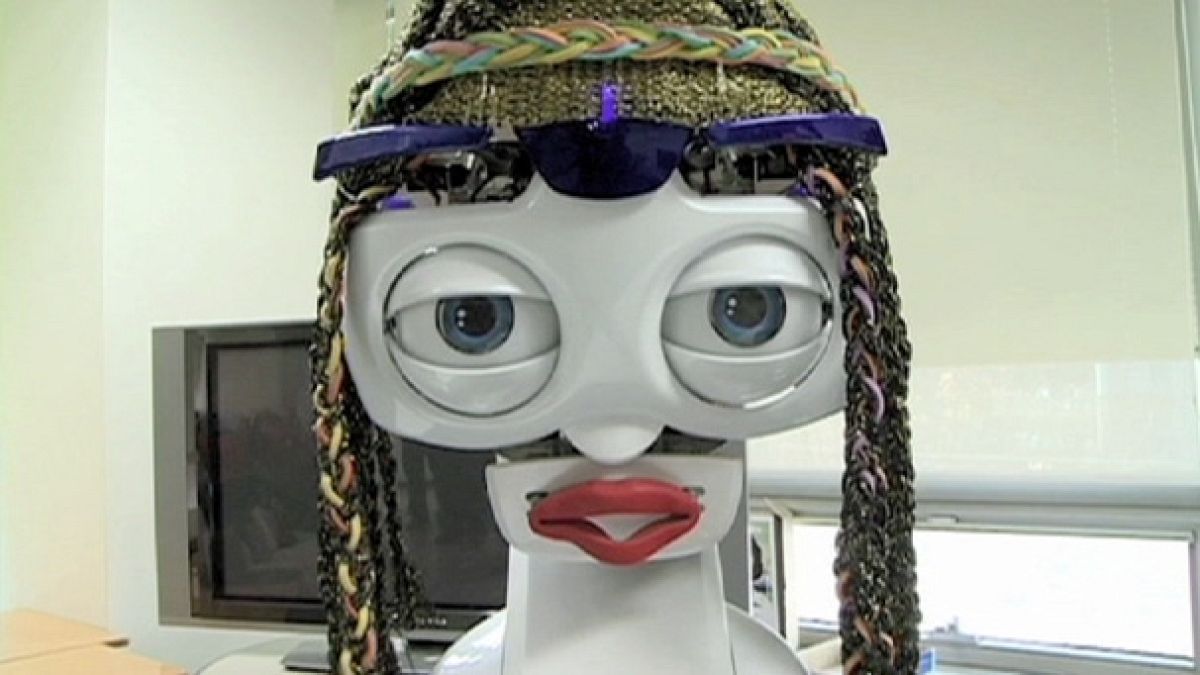Technology is increasingly playing a role in the classroom. Our first example is in the United States. We are also visiting Estonia and South Korea to see some 21st century schooling.
‘Quest to Learn’ is a state school in New York City that works almost like a video game. Kids not only learn by playing games, they design them too.
Learning takes on a whole new meaning here. As well as writing essays, they also post multi-media features on their own social media websites. Teachers have been trained to have a comprehensive understanding of technology.
Teacher Limor Levy outlined one of his latest projects: “My students have been reading ‘Chains’, a novel by Laurie Halse Anderson, that takes place during the revolutionary war. So one thing that I’ve been trying to do to get them really interested in the literature, is having a reason for reading it.”
At the school, game makers work closely with teachers to design each class as a unique challenging game. The students work together to find solutions.
Katie Salen describes herself as a game designer, animator, and design educator. She is Executive Director of Design at ‘Quest to Learn’ and told us: “Games and systems are so interesting because they are incredibly motivating. You get dropped into a complex problem space and then you are incentivised to try harder, try harder, try harder. And if we think about what learning looks like, that’s a lot what good learning looks like.”
Technology is a primary focus for most children today and at the school the pupils have the opportunity to explore a plethora of digital delights.
Quest to Learn has blurred the line between fun and leaning, offering children a more accessible way to master subjects while being kept serious entertained.
The ball of new technology is rolling in an Estonian classroom with what is fast becoming a familiar teaching method in Estonian schools. Students use a digital whiteboard to study traditional subjects like maths and foreign languages.
Ulla Kamp, who teaches English at Tallinn Secondary Science School, explained: “Nowadays the entertainment part is important as well, so the students do want to actively do something in the classroom. The book and the pencil and the notebook are not enough any more for them. The students seem to learn things faster because they are actively participating in the process.”
Children who are accustomed to computer games and touch screen systems can easily cope with a digital whiteboard also known as a smartboard. Programmes are designed to suit different age groups.
Student Anne-Mari Kukk is enthusiastic: “It makes things easier for teachers also, everybody’s attention is on the smartboard and all the students work efficiently.” Another pupil, Karl-Ander Kasuk, said: “It’s more fun and faster to work with it.”
Teachers have to prepare content for the whiteboard before the lesson. The boards are connected to the internet and many tasks can be downloaded.
Interactive technology helps the environment too. Pupils do not have to take their tests on paper anymore. Questions with multiple-choice answers are displayed on a digital answering pad.
Of course the science and physics lessons are also heavily technological but that is something these techno-savvy children can easily handle.
In South Korea, robots are being used to help meet the growing need for teachers. The country has a shortage of native English teachers but the Philippines has plenty.
The South Korean government has introduced robotic avatars for elementary schools in the south-eastern city of Daegu.
The robot – called Engkey – is controlled remotely by teachers in the Philippines. It is wheeled around the classroom while speaking, reading books and dancing to the music by moving its head and arms.
Inventor Kim Moon Sang said: “Our goal is not to make Engkey a real English teacher but to make him work with our Korean teachers as an assistant to better their class. I think we are doing well because the children have more interest in English and they are improving their pronunciation.”
The robots are equipped with an avatar face of the teacher and voice-recognition system to interact with the students. Through motion-detection technology an LED screen mimics the facial expressions of instructors.
Student Kang Min June is a convert: “I like English class. At the beginning we always sing “Hello” and then we learn new things that we have never learnt before. At the end we make groups and play a lot of English games together.”
Human teachers are present in classrooms while students interact with the robot instructors.
Professor Do Ju Hyun said it took some time to get used to: “During their first classes the children felt a little bit uncomfortable, they thought that the English teacher was inside the robot! So I explained them how Engkey really works and now they are learning a lot with it. They really feel more comfortable now.”
Over the next two years, the Korean government is planning to send Engkey to every kindergarten in the country to help with other subjects.
The avatars are developed at the Korea Education and Research Information Service – KERIS. They believe the robots help students engage better in class.
